I recently visited the National Museum in Jakarta for an interesting exhibition about the Kris (or Keris in Indonesian), which is a traditional weapon that UNESCO recognizes as a Masterpiece of the Oral and Intangible Heritage of Humanity.
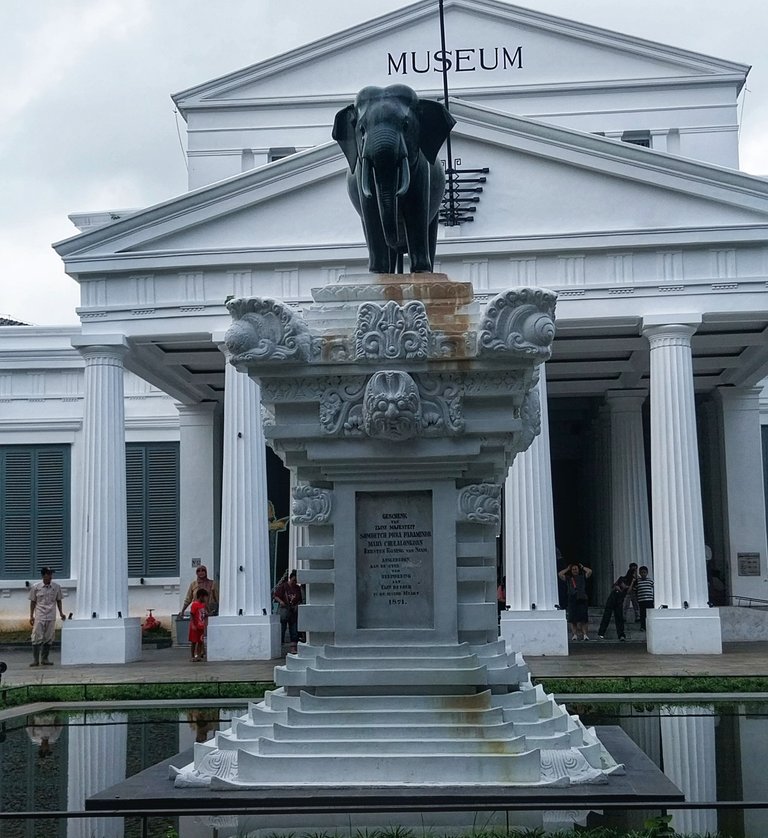
There were hundreds of fascinating artifacts to see, ranging from kris, inscriptions, to ancient statues. I was very interested in learning about the history, discovering interesting stories, especially how they make these weapons.
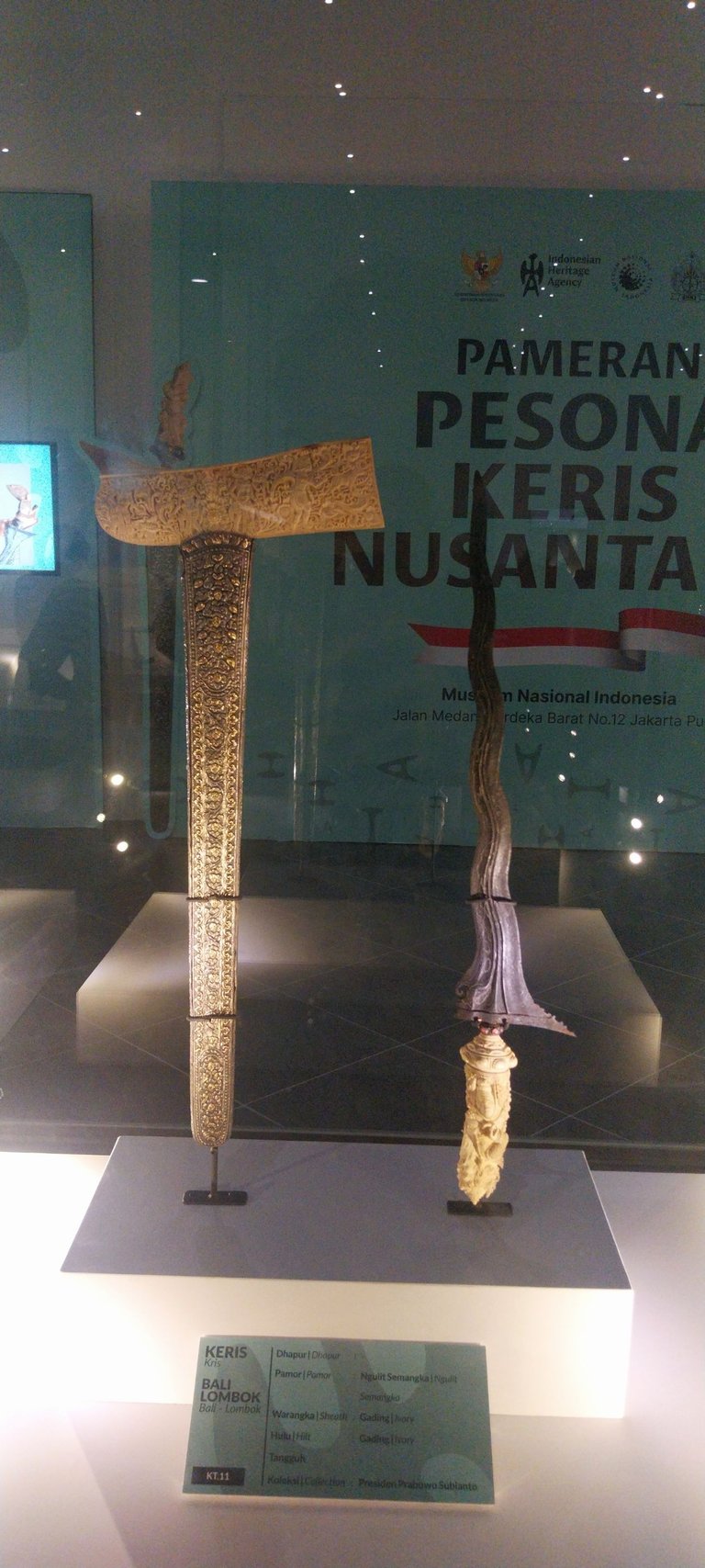
More Than Just a Weapon
Before diving deeper, let’s start by discussing that the kris is not an ordinary weapon. The kris is a symbol of status, spirituality, and heritage. The Javanese, in particular, consider that owning a kris is a sign of nobility or high standing in society, a belief that has existed since the era of Javanese kingdoms. The kris is believed to have a soul or spirit, offering protection to its holder and providing strength.
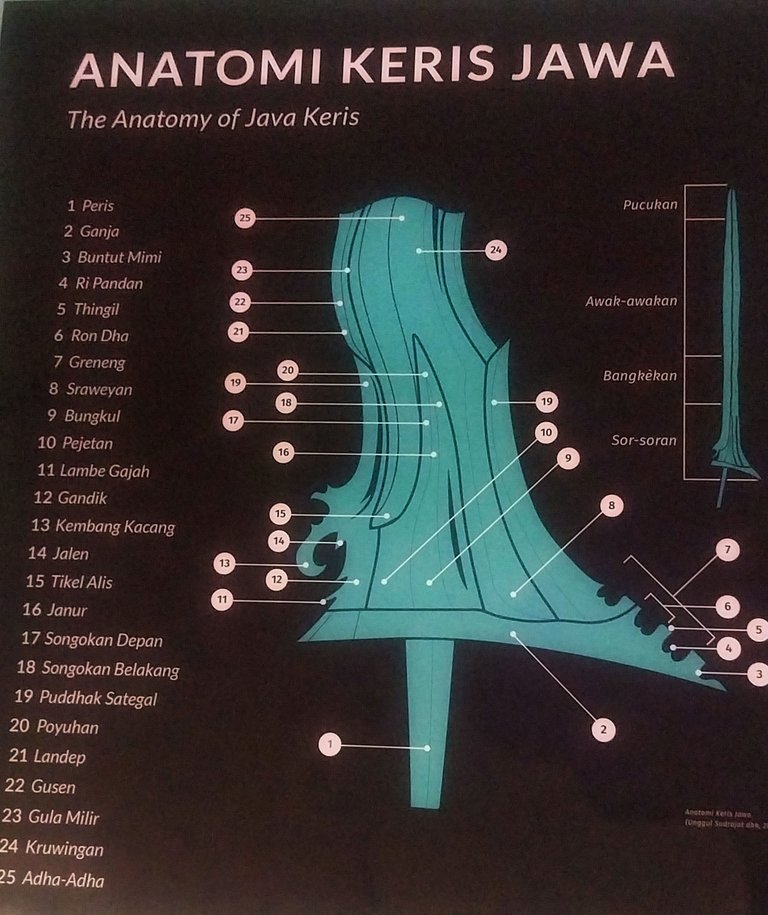
One of the things that really caught my attention was pamor, the shiny pattern on the kris blade. The process of making pamor is quite intricate. First, the Pande, or blacksmiths, mix various metals such as iron, steel, and nickel. This mixture is heated and hammered together during the forging process, which combines them into a single blade. After forging, they use an acid bath, often with arsenic acid or something called warnapura, to treat the blade. This chemical reaction makes the nickel appear bright against the darker iron, creating beautiful patterns. Each blacksmith, or pande, has their own secret recipe for how they layer and forge the metals to achieve different pamor designs. Some patterns are simple, while others are very complex, each telling a story or symbolizing something special like protection, strength, or even the cosmos.
Oh, it’s also important to note that the base material of the kris blade is not solely metal like iron or nickel. It can also include meteorite. I never knew how these blacksmiths could know exactly where meteorites fall.
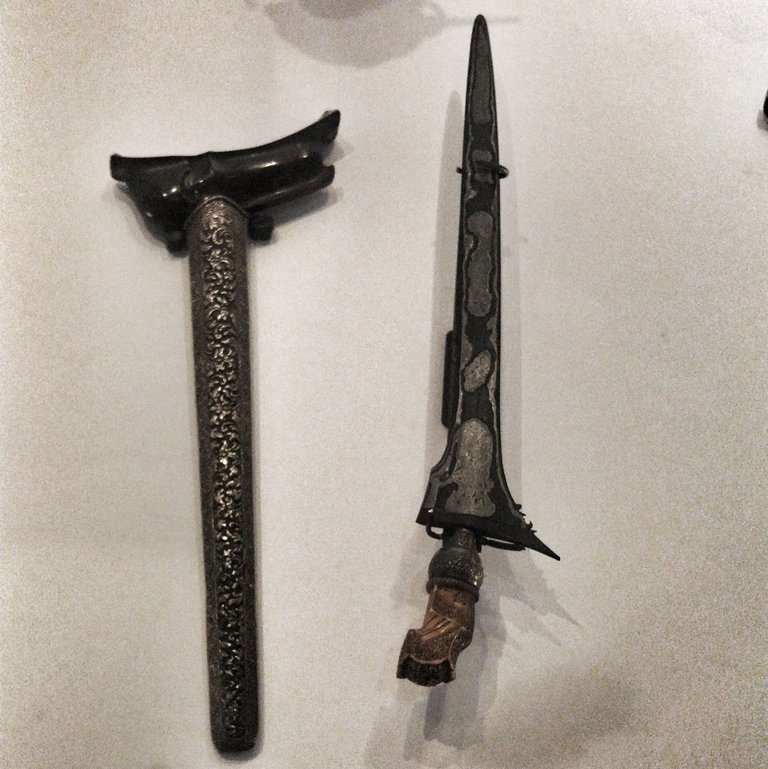
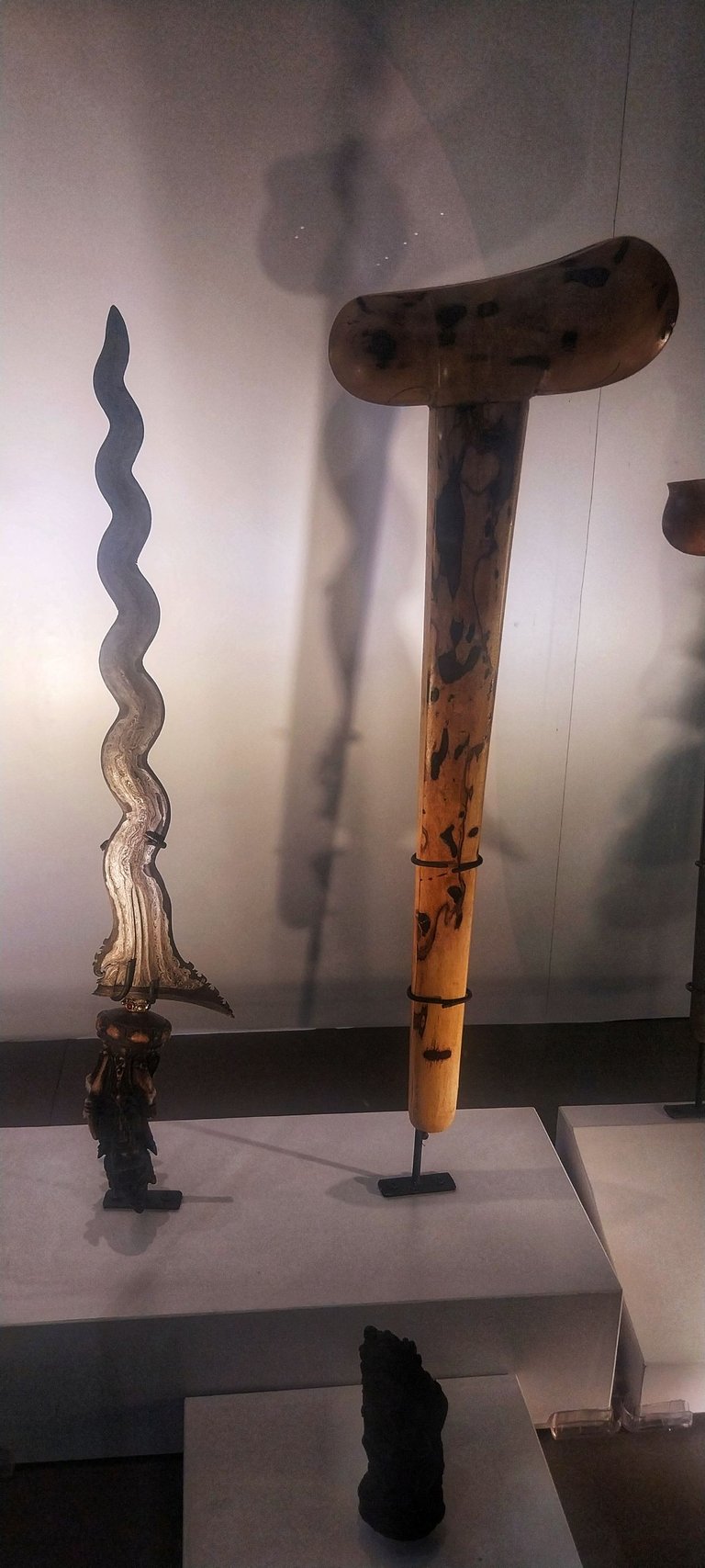
Symbolism on the Hilt
The hilt of the kris is another highlight. The hilt is full of symbolism. In Java, they might call it adek or garan, while in Bali it is called danganan, and in Madura, garama tau landean.
At this exhibition, I encountered many kris hilts shaped like mini sculptures, often carved with designs that reflect the status of their owners. For instance, a hilt shaped like a mythical creature, which could symbolize power and strength.
There are also hilts adorned with floral motifs representing beauty and peace. Some hilts feature carvings of figures from local legends, each telling a story of bravery, wisdom, or love.
Some hilts are smooth, showing simplicity and elegance, while others are detailed with intricate carvings, symbolizing complexity and depth of character.
The shape and style of the hilt can also indicate its region of origin; this local identity is quite prominent in the kris on display.
I learned that the blade of the kris is generally divided into three parts: the top (pucukan), the middle (awak-awak), and the bottom (sor-soran). Each part has its own name and function, such as lis-lisan or sogokan, and it was interesting to learn what they all mean.

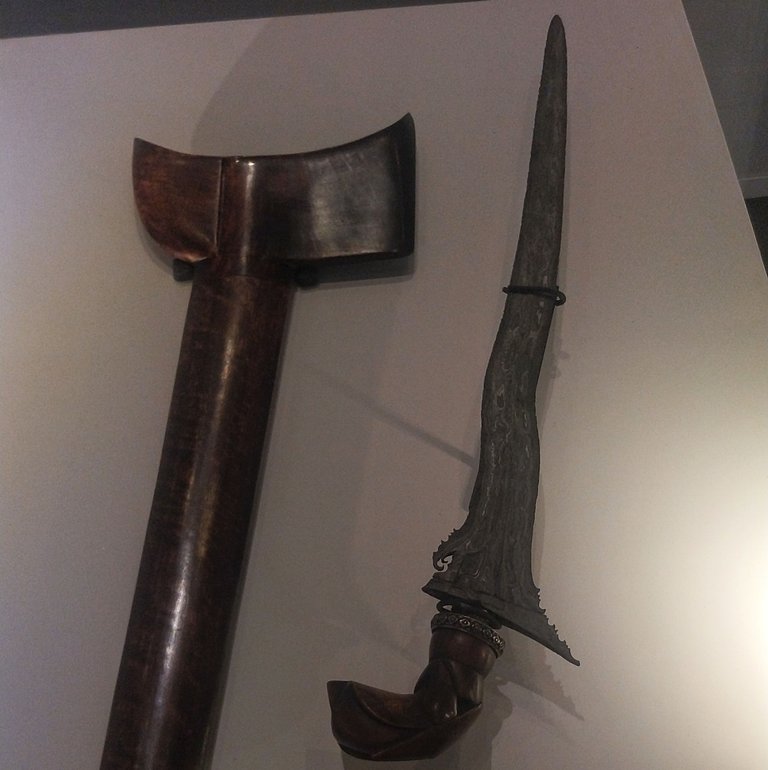
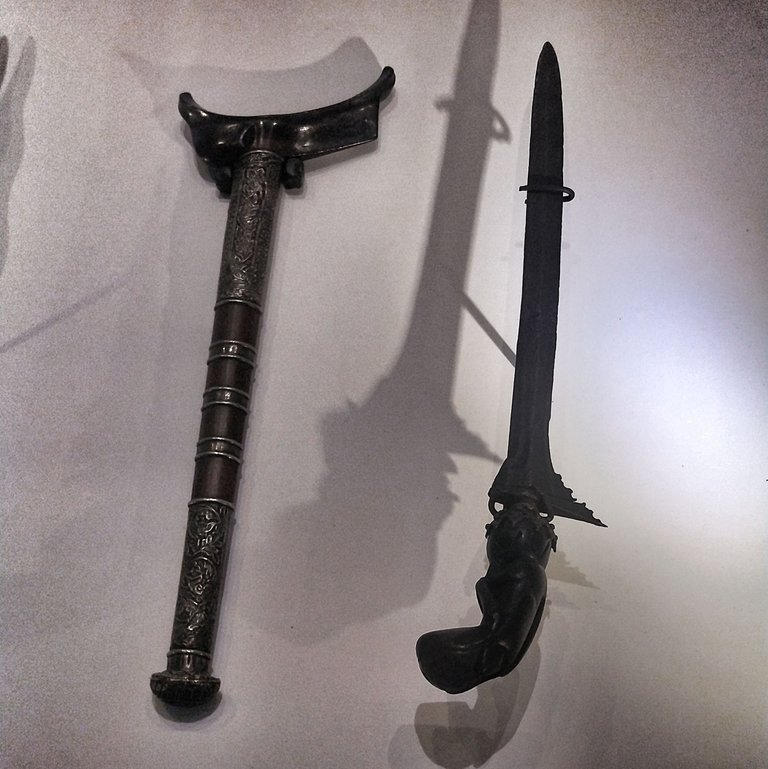
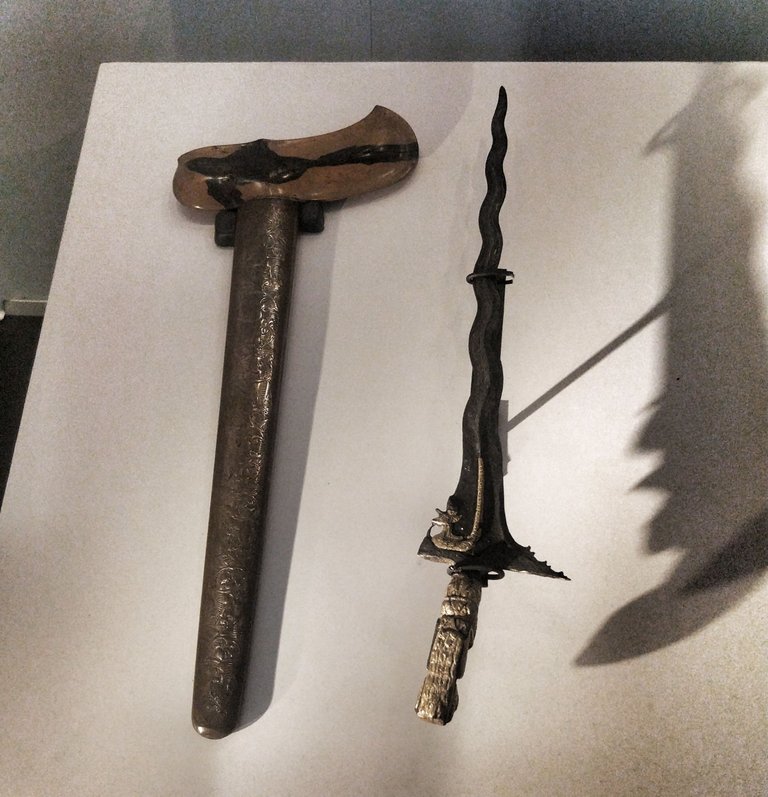
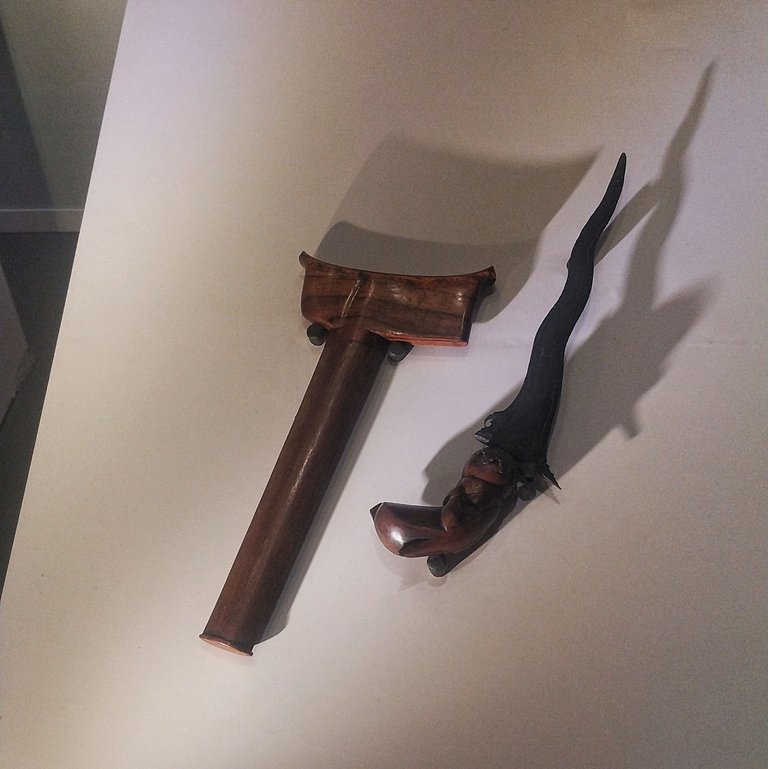
Cultural Significance
The kris holds a significant place in Indonesian culture. The kris is used in ceremonies, from weddings to coming-of-age rituals, symbolizing the transition of life stages.
The kris also appears in traditional dances and theater such as wayang kulit (shadow puppet), usually to signify the social status of characters.
The kris is also part of traditional attire, especially in ceremonial contexts, where it is worn as a symbol of honor and heritage.
The kris is not just a weapon. I can’t even imagine how someone could stab another person with such a wavy dagger. In everyday life, I still hear that the kris is believed to ward off evil spirits or bring good luck, making it a cherished heirloom passed down through generations.
My appreciation for the Pande has grown even more. They are the ones who keep this tradition alive, making each kris special with their skills.
The Legend of Ken Angrok and the Cursed Kris
One of the most interesting stories I encountered was about Ken Angrok, also known as Ken Arok, who lived in the 13th century. Ken Angrok was an ambitious man who rose from humble beginnings to become the founder of the Singhasari Kingdom in East Java. His story is deeply intertwined with the myth of the kris, showcasing its ancient roots and mystical significance.
Ken Angrok wanted to marry Ken Dedes, the beautiful wife of Tunggul Ametung, a local ruler, believing she was destined to bear a line of kings. To achieve this, he needed a powerful kris to eliminate Tunggul Ametung. He approached Mpu Gandring, a renowned kris maker, asking for a weapon that would ensure his success. However, Mpu Gandring warned that the kris needed a year to be properly forged and blessed to avoid becoming a tool of evil. Impatient and driven by his desires, Ken Angrok visited Mpu Gandring after only five months, seeing that the kris was almost complete but not yet imbued with its full power.
In a fit of rage, Ken Angrok took the unfinished kris and killed Mpu Gandring with it. As he lay dying, Mpu Gandring cursed the kris, declaring it would bring death to Ken Angrok and seven generations of his descendants. True to the curse, Ken Angrok used the kris to assassinate Tunggul Ametung, framing another man, Kebo Ijo, for the crime. He then took Ken Dedes as his wife and became the ruler of Tumapel.
However, the curse of the kris eventually caught up with him. Ken Angrok was killed by his own stepson, Anusapati, using the same cursed kris, after Anusapati discovered that Ken Angrok had murdered his biological father. This tragic tale not only highlights the kris's role in power struggles but also underscores its mystical power and the belief in its ability to influence fate, dating back to ancient times.
Visiting this exhibition was like going on a little adventure through Indonesia's past. It was more than just looking at old weapons; it was about understanding a piece of culture that is both strong and magical. The way the museum presented everything made it really special, and I’m glad I got to experience it.
Delegasi 500 HP
Delegasi 300 HP
Delegasi 100 HP
Delegasi 50 HP